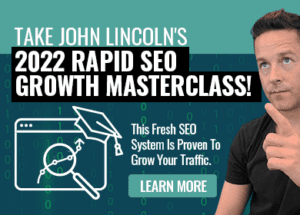How to Use Programmatic Ads & DSP to Reach New Customers

And you’ve probably also read the acronym “DSP,” which stands for demand side platform.
But what do they mean? And how do they help you reach people in your target market?
For the answers to those questions, read on.
What Are Programmatic Ads?
Programmatic ads enable you to enlist the powerful aid of software algorithms when buying online ad space.
They make your life easier because software applications do all the heavy lifting of finding the right places to run your ads.
Programmatic ads also boost your bottom line by optimizing your bids and getting your ads in front of people who are likely to become customers.
So they save you time and make you money.
That’s the high-level overview. Now let me explain the concept in a little more detail by walking through an example.
Example:
Let’s say you visit Captain Wiggle’s website. It’s a website that earns revenue with advertising.
When you visit the site, there’s some software logic that happens behind the scenes. Much of that logic involves displaying the web page so that it’s easy to read and navigate.
But there’s also logic associated with running the ads. As the page is loading, there’s software that works with an ad platform to deliver a display ad on the sidebar.
The software on the ad platform side examines requests from all advertisers who’d like to put an ad on Captain Wiggle’s website. It picks the ad with the highest bid and returns it to the site.
It’s that ad that gets displayed on the sidebar.
That’s all happening on the fly, by the way. That’s why you’ll frequently see the buzz phrase “real-time bidding” or RTB associated with programmatic advertising.
There’s software that takes literally fractions of seconds to determine which ad is the “right” ad to run on any given website.
But what about the ad platform? What’s that all about?
The Ad Platform
An ad platform is an online marketplace that brings buyers and sellers together. In this case, the buyers are advertisers and sellers are website publishers.
Advertisers log on to ad platforms and select the types of sites they’d like to run their ads on. On some platforms, they can even select the specific sites where they want people to see their ads.
Additionally, marketers will also upload their creatives to ad platforms. That’s necessary for display advertising.
And advertisers will also set bids for their ads. That’s where they let the platform know the maximum amount of money they’re willing to spend on running their ads.
The ad platforms also enable website owners to opt-in for advertising. They benefit by getting a cut of the ad revenue (the bid).
What is DSP?
Before I answer that question, I should explain the concept of an SSP.
An SSP (supply-side platform) is part of the online ad marketplace that allows website publishers to volunteer for advertising.
A DSP (demand side platform) is part of the online ad marketplace that allows advertisers to buy ad space.
Incidentally, sometimes you’ll see the phrase “ad inventory.” It’s a reference to available ad space within the DSP’s available websites.
You should also familiarize yourself with the concept of an ad exchanger. That’s how the SSP lets the ad exchange know about available advertising space.
When you use a DSP, you’ll usually bid on a per-impression rate. For example, you might bid 16 cents.
That’s how much you’ll pay every time a website publishes one of your ads.
But some platforms also allow you to pay per thousand impressions (CPM). That’s called programmatic direct and it’s a great way to get the word out about your brand.
Examples of DSP Networks:
If I’ve whetted your appetite about the usefulness of programmatic advertising and DSP, you might want to launch a few ads. Here are some DSPs you can use:
- Amazon Advertising Platform (AAP) – If you want to reach people shopping for pretty much anything on Amazon, AAP is your platform. But you don’t just have to confine your ads to the Amazon website. You can use AAP to run ads on Fire TV and iMDB as well.
- Basis Technologies – Get your ads in front of people who frequent CNN, twitch, ESPN, and even Hulu. Basis also offers consulting and advice about media strategies.
- Google Marketing Platform – A great option for small businesses or multinational corporations. It’s got various platforms you can use, including Campaign Manager 360 and Display & Video 360 (once known as DoubleClick).
- Knorex – An outstanding choice if you’re into social media marketing. Use Knorex to run ads on LinkedIn, Instagram, and Facebook all at once. And you can add Google Search into the mix as well.
- smadex – Put this one on your shortlist if you need a mobile-first DSP solution. As a bonus, smadex holds an Internet Advertising Bureau Gold Standard certification.
How Do Programmatic Ads Fit Into Your Strategy?
Programmatic ads are a great way to reach people at the top of the sales funnel.
In case you’re unaware of the concept of the sales funnel, the top of the funnel refers to the “awareness” stage. That’s when you let people know that your company exists and you tell them what you’re selling.
Think of programmatic ads as a supplement to your current marketing efforts with search and social media.
Reach customers in a way that saves time and earns you more money.
FAQs – Programmatic Ads
1. What Is a Private Marketplace?
A private marketplace (PMP) is similar to an open auction for ad inventory. But it’s got restrictions in terms of who can participate. Usually, PMPs operate on an invite-only basis.
2. What Is Programmatic Direct?
It’s when a website owner skips the auction process and sells ad space at a fixed cost per thousand impressions (CPM). Publishers can sell ad space to a single publisher or to multiple publishers.
3. What Is an Ad Exchanger?
It’s what the SSP uses to make ad inventory available to advertisers. It’s also what the DSP uses to enable advertisers to bid on available inventory.
Welcome To John Lincoln Marketing
Welcome to John Lincoln’s personal website. On this website, we offer courses by John Lincoln, review software, publish articles and videos. You can also learn about John Lincoln’s books, films, book him to speak and contact him. John is directly associated with many of the businesses mentioned on this website and freely discloses this information.
About the Author

John Lincoln is CEO of Ignite Visibility, one of the top digital marketing agencies in the nation. Ignite Visibility is a 4x Inc. 5,000 company. Ignite Visibility offers a unique digital marketing program tied directly to ROI with a focus on using SEO, social media, paid media, CRO, email, Amazon and PR to achieve results. Outside of Ignite Visibility, Lincoln is a frequent speaker and author of the books “Digital Influencer” and “The Forecaster Method.” Lincoln is consistently named one of the top digital marketers in the industry and was the recipient of the coveted Search Engine Land “Search Marketer of The Year” award. Lincoln has taught digital marketing and Web Analytics at the University of California San Diego since 2010, has been named as one of San Diego’s most admired CEO’s and a top business leader under 40. Lincoln has also made “SEO: The Movie” and “Social Media Marketing: The Movie.” His business mission is to help others through digital marketing.
Get Social
Recent Tweets
Contact John Lincoln
Want to get in touch with John Lincoln? Click Here To Reach Out.
Related Posts

The Ultimate Guide to Conversion Rate Optimization for Any Business
Whether you’re a seasoned marketer or just starting out, conversion rate optimization (CRO) is a powerful tool that can boost your sales, leads, and overall

16 Questions to Help You Choose an SEO Company
Feeling overwhelmed by the sea of SEO companies out there? You’re not alone! Choosing the right partner is crucial for achieving your online marketing

Elevate Your Business with Proven Blogging Strategies in 2024
In 2024, business blogging is not only still relevant – it’s a critical component of any content marketing strategy. Companies that blog generate 67% more

